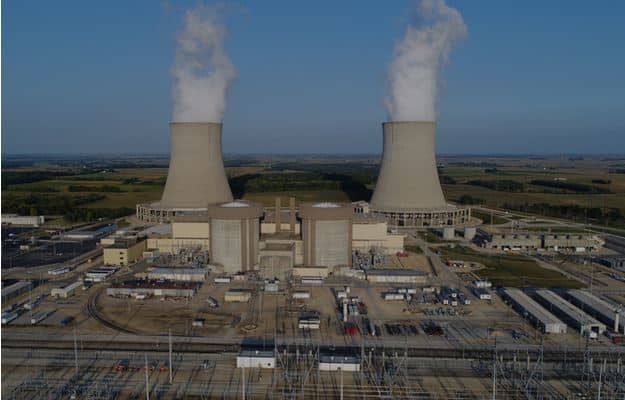About 80 Percent of Coal Power Plant Sites Could Host Advanced Nuclear Reactors: DOE Study

The U.S. Energy Department on Sep. 13 released a study evaluating the benefits and challenges associated with a coal-to-nuclear, or C2N, transition in the U.S. The transition could increase nuclear capacity to over 350 gigawatts, according to the report. By comparison, the existing nuclear power fleet has a capacity of 95 gigawatts and provides half of the nation’s zero-emission electricity. Further, in contrast to operating coal power plants, long-term job impacts could boost economic activity by $275 million, which would result in an increase of 92 percent in tax revenue for the local county.
There is growing pressure on utility plant owners to retire coal power plants due to environmental concerns and climate change. A shift toward a decarbonized economy and increased competitive economic pressure have led to the retirement of coal power plants. According to the study, 157 coal plant sites that had recently retired and 237 coal plant sites that are currently operating were identified as potential projects for C2N transition. To determine if the site could safely host a nuclear power plant, ten parameters were taken into consideration, including population density, flooding potential, proximity to earthquake fault lines, and nearby wetlands. The study found that 80 percent of the potential sites could host advanced nuclear power plants with a generating capacity of more than 250 gigawatts. In the study, it was also shown that reusing coal infrastructure for new, advanced nuclear reactors can reduce construction costs by 15-35 percent.
Replacing retiring coal generation capacity provides a means to utilize what would otherwise be stranded assets at coal power plant sites. Further, the C2N transition may be an opportunity to deploy small modular and advanced reactors. The department expects the transition to help communities save jobs, improve tax revenue, and improve air quality standards while offering localized solutions to move towards a clean energy future, according to the press release.
The study found that nuclear power plants reduce greenhouse gas emissions by 86 percent when they replace large coal plants in a region, which corresponds to taking off 500,000 gasoline-powered cars from the roads. Additionally, the transition is expected to create new jobs, enhance economic activities, and benefit the energy community. Nuclear as a coal replacement might also be particularly attractive for utilities because of the technology-neutral zero carbon tax credits included in the recently enacted Inflation Reduction Act.
In the report, the evaluated site choice is based on available data and documented assumptions for analysis only, therefore, the findings are only informative at a general level. The study is conducted by Idaho National Laboratory, Argonne National Laboratory, and Oak Ridge National Laboratory and sponsored by the department’s Office of Nuclear Energy.
EnerKnol Pulses like this one are powered by the EnerKnol Platform—the first comprehensive database for real-time energy policy tracking. Sign up for a free trial below for access to key regulatory data and deep industry insights across the energy spectrum.
ACCESS FREE TRIAL